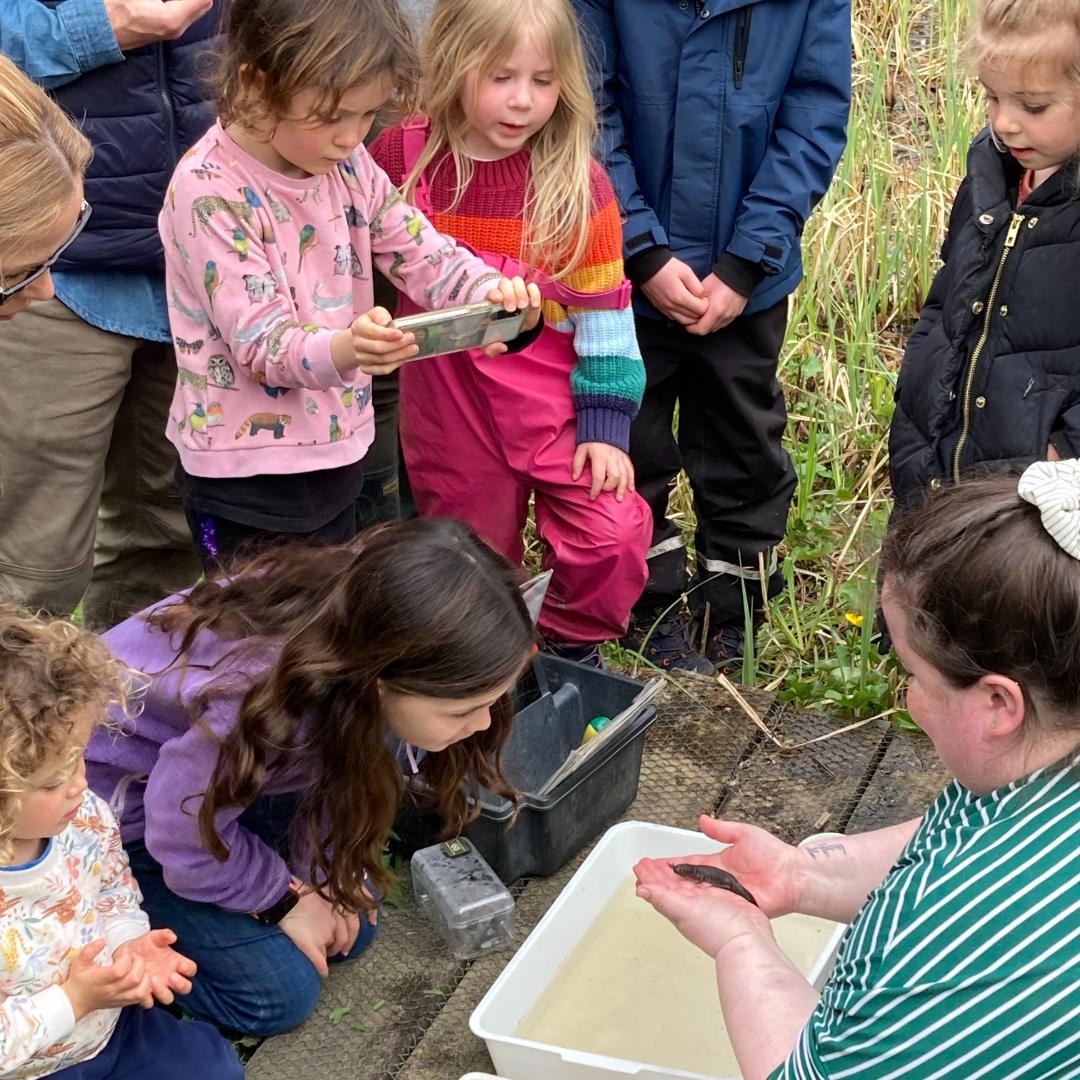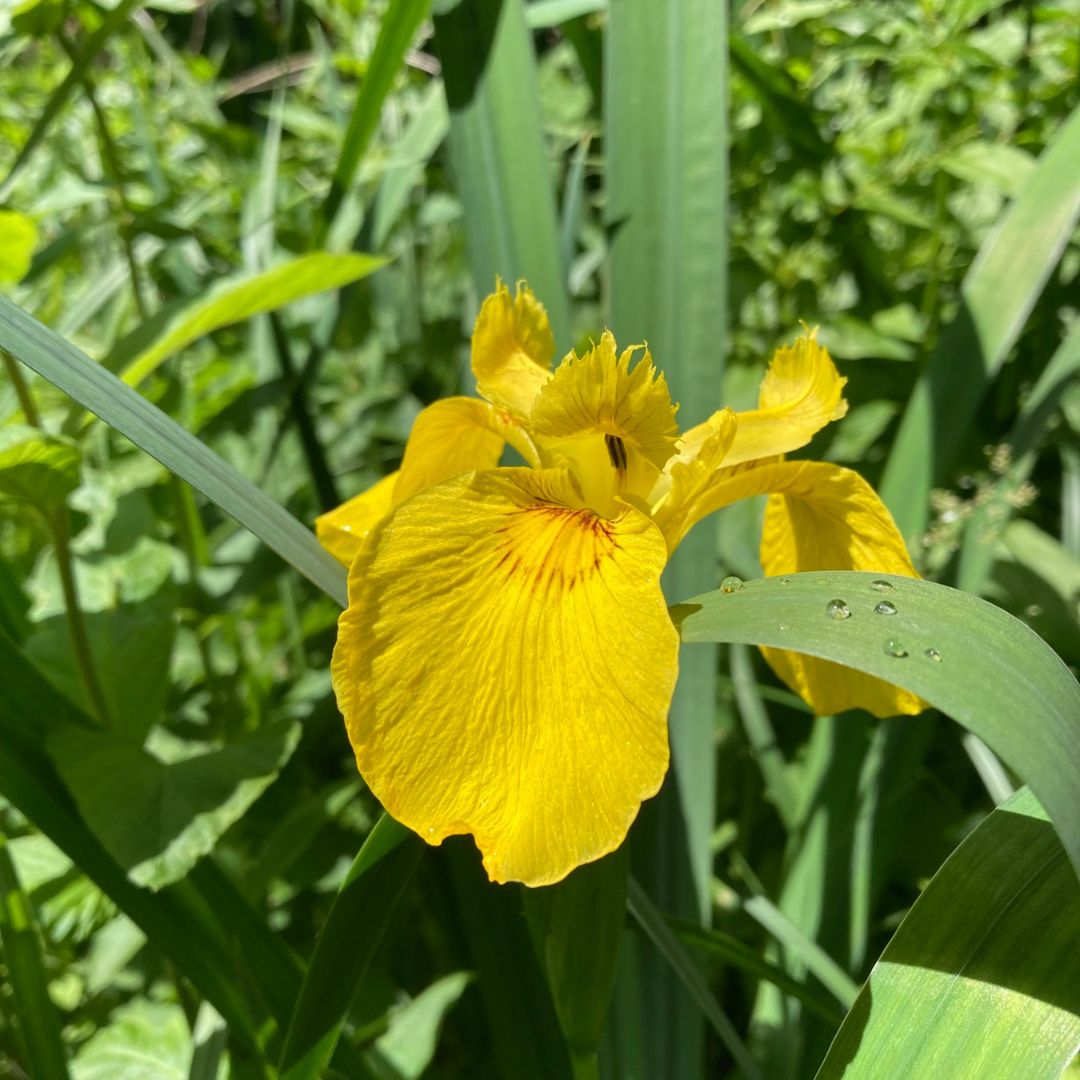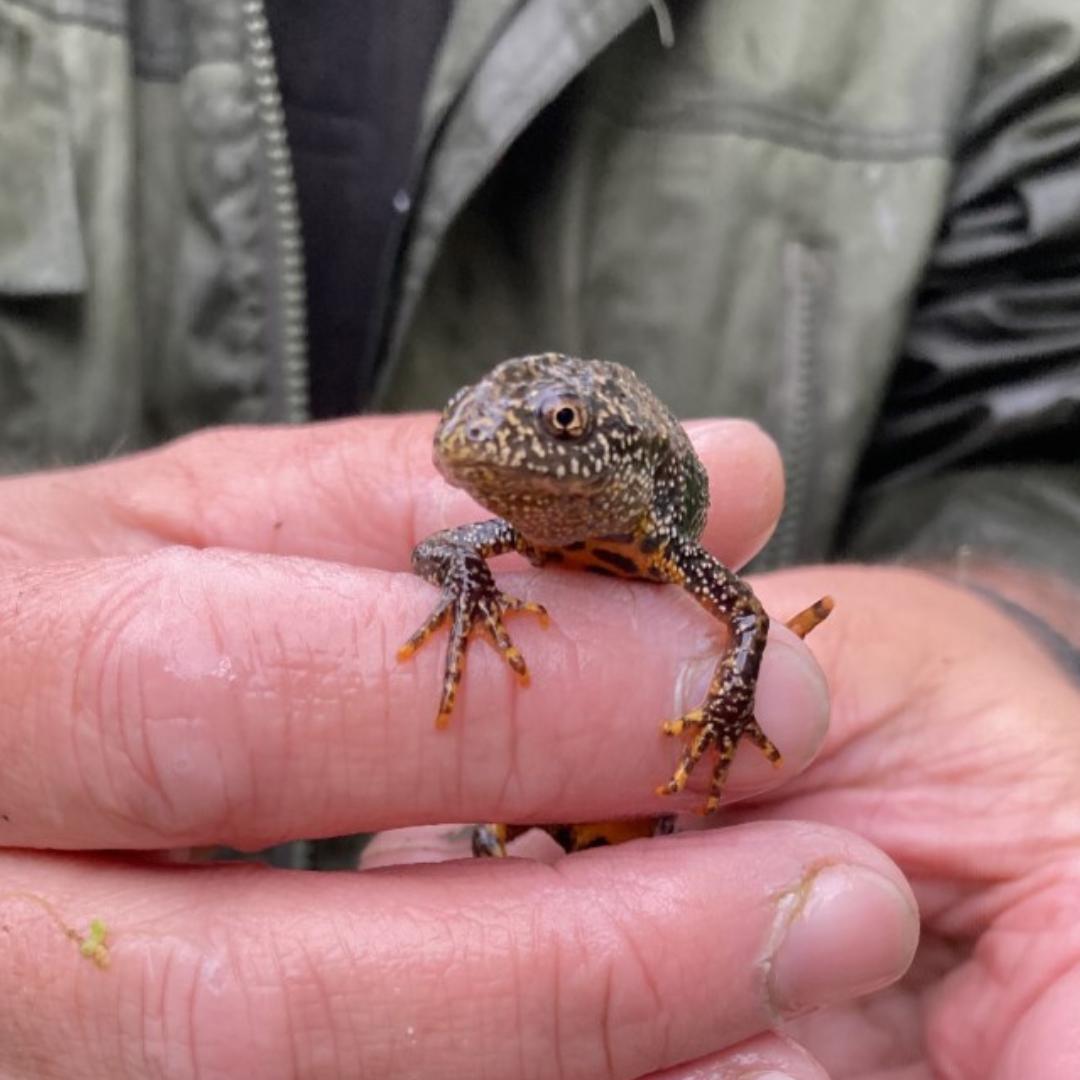The Naturalist’s Garden
The centrepiece of the Naturalists Garden is the pond which was built here in the 1990s. The pond is used for educational activities and contains three species of newt: smooth newt (Lissotriton vulgaris), palmate newt ( Lissotriton helveticus) and great crested newt (Triturus cristatus), (the great crested newts in the pictures are held by licensed experts).
Late May to August many small, bright blue, male Azure Damselflies can be seen flying over the pond. The females are greener and lay their eggs (ovipositing) on plants in the pond. The pond is also home to the Large Red Damselfly, Common Darter Dragonfly and Southern Hawker Dragonfly.
'Many sorts of dragon-flies appear for the first time. Swifts devour the small dragon-flies as they first take their flight from out their aurelias, which are lodged on the weeds of ponds.' - Gilbert White, 2nd June, 1770
In 1766 Gilbert White kept a record titled 'Flora Selborniensis' of the plants he observed in the countryside outside his garden. The Naturalist's garden contains many of the trees, shrubs and flowers Gilbert saw on his walks around Selborne. This includes Spring bulbs such as Narcissus, Snake's Head Fritillary and Tulip sylvestris.
The pond also contains plants first recorded growing in Hampshire including Bogbean (Menyanthes trifoliata), which needs to be controlled annually to stop it spreading across the whole area of the pond.
The Naturalists Garden contains several 18th century apple tree cultivars hung with bird feeders to encourage birds to this area where they also feed off the windfall apples in the autumn. There are also trees of botanical interest including the maidenhair tree (Ginkgo biloba).




